Dutch Clark
The Life of an NFL Legend and the Birth of the Detroit Lions
Chris Willis

THE SCARECROW PRESS, INC.
Lanham Toronto Plymouth, UK
2012
Published by Scarecrow Press, Inc.
A wholly owned subsidiary of The Rowman & Littlefield Publishing Group, Inc.
4501 Forbes Boulevard, Suite 200, Lanham, Maryland 20706
www.rowman.com
10 Thornbury Road, Plymouth PL6 7PP, United Kingdom
Copyright 2012 by Chris Willis
All rights reserved. No part of this book may be reproduced in any form or by any electronic or mechanical means, including information storage and retrieval systems, without written permission from the publisher, except by a reviewer who may quote passages in a review.
British Library Cataloguing in Publication Information Available
Library of Congress Cataloging-in-Publication Data
Willis, Chris, 1970
Dutch Clark : the life of an NFL legend and the birth of the Detroit Lions / Chris Willis.
p. cm.
Includes bibliographical references and index.
ISBN 978-0-8108-8520-2 (hardback : alk. paper) ISBN 978-0-8108-8521-9 (ebook)
1. Clark, Dutch. 2. Football playersUnited StatesBiography. 3. Football coachesUnited StatesBiography. 4. Detroit Lions (Football team)History. I. Title.
GV939.C52W55 2012
796.332092dc23
[B] 2012002659
 The paper used in this publication meets the minimum requirements of American National Standard for Information SciencesPermanence of Paper for Printed Library Materials, ANSI/NISO Z39.48-1992.
The paper used in this publication meets the minimum requirements of American National Standard for Information SciencesPermanence of Paper for Printed Library Materials, ANSI/NISO Z39.48-1992.
Printed in the United States of America
Foreword
During my senior year at the Haverford School outside of Philadelphia, I began the annual rite of passage looking for a place to continue my education and play football. Ivy League schools such as Harvard and Princeton were preferred destinations, but when my applications were rejected, I needed a new game plan.
My new game plan took me to a tiny school of a couple thousand students called Colorado College. Framed by the Rocky Mountains, Colorado College has a beautiful campus. It was far away from my home in Villanova, Pennsylvania, and was like nothing that I had ever seen before. But there was more to it than sheer beauty and mountains. Colorado College is the alma mater of hall of famer Dutch Clark.
Growing up, I knew who Dutch Clark was, and thats about it. By the time that I was ready to go to college, Clark was already a member of the College Football Hall of Fame and was close to being a member of the Pro Football Hall of Fames charter class, along with legends of the game, such as Jim Thorpe, Red Grange, and Sammy Baugh. I originally thought that he played at the University of Colorado at Boulderwinners of the 1957 Orange Bowlrather than small, unknown Colorado College. This fascinated me. How did a player as legendary as Clark not graduate from football factories such as the University of Southern California or Notre Dame? As a promising player myself, I was inspired by Clarks captivating story. I was sold on this small school that rested in the shadow of the Rockies, and I made the decision to go there. I became captain of the football team and, eventually, an All Rocky Mountain Conference running back.
Dutch Clark is one of the most undervalued and unknown members of the Pro Football Hall of Fame. In my 49 years at NFL Films, I never had the privilege of interviewing or even meeting Clark. Ive seen little film footage of him, and I never saw him play. In the following pages, you will learn not just about his unlikely rise to stardom as the face of the Detroit Lions and his all-around excellence as a football player but about his impact on pro footballs popularity in the Motor City. Chances are, if you youre under 40, you know as much about Dutch Clark as I did in my late teensthat is to say, practically nothing.
Chris Willis, as head of the research library at NFL Films, is one of the NFLs preeminent football historians. With over 15 years of experience at NFL Films, Willis is uniquely qualified to bring the history of one of the most important football players youve never heard of to a larger audience. When Chris first told me that he was writing a book about Dutch Clark, I knew it would be a formidable challenge. In the book you hold in your hands, he has met it.
Steve Sabol, President, NFL Films
Preface
Working as the head of the research library at NFL Films, Ive spent the past 15 years looking at football footage of players both old and new. In our library, footage from the 1920s and 1930s is scarce, but we do have some full games from the NFLs first two decades. As I was beginning my research on the great Dutch Clark for this book, the first thing that I wanted to do was watch as much footage of him as I could find. If I was going to write about Dutch, I wanted to see him play.
In the fall of 2009, I started digging through our vault to see what we had. I was delighted to find that we had four games of Dutch in our library (one game with the Portsmouth Spartans and three with the Detroit Lions). Now I was ready to watch. The first tape that I put in was the Thanksgiving Day game from 1936, between the Lions and the Chicago Bears. Players from this era always seem to be better in newspapers than on film. They were built up as heroes in print by sportswriters, rather than seen on film or television like todays stars, so I was curious to see if Clark was as good as he was written about.
What I saw was pretty incredible. Watching Clark closely, I saw his play just jump off the screen. Wearing his famous No. 7 jersey for the Lions, he was the best player on the field that day, and the Bears had some talented players, such as hall of famers Bronko Nagurski, George Musso, and Bill Hewitt. Although he lined up in the halfback position, Clark played quarterback on offense in the Lions single-wing formation. Clark handled the ball often, running more than passing. Although he never broke off a long run, he was rarely stopped for a negative gain.
The first thing I really noticed about him was his feet. He never stopped his feet when going through a hole or being hit by a defender. They always seemed to be moving. He looked like a ballerina in cleats. After he retired Clark always said, For me, running is like driving a car. Id look off down the field and see what was going on ahead of me. When people were close to me, Id just let my instinct work for me. And, oh, on a muddy field, I really killed them. For some reason, I dont know why, I didnt slip or slide like everyone else. The game film showed exactly that; he always seemed one step ahead of the defense. Every carry helped move the ball. Gain of 4, gain of 7, gain of 3, gain of 10. He moved the chains. He would hit the hole fast and get as many positive yards as possible. I can see why players from his era always said that he was the toughest man to tackle. Nagurski once said, He looked like the easiest man in the world to tackle. The first time I tried I thought Id break him in two. But when I closed my arms, all I was holding was air.
Watching Clark on film, I can see why Bronko thought that. During this period, the Lions were predominately a running team, so the defenses were designed to stop Clark, making it even more impressive that he could be that productive when every NFL team was gunning for him. The other games on tape reconfirmed Clarks running style. In a 1937 game against the New York Giants, Clark showed his all-around ability. He completed passes downfield and played at an all-pro level on defense. Playing safety (last line of defense), he called all the signals and never missed a tackle. He looked like a coach on the field.

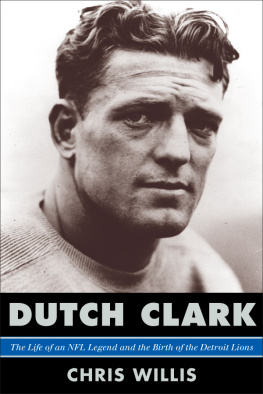
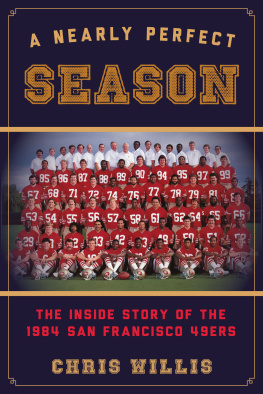

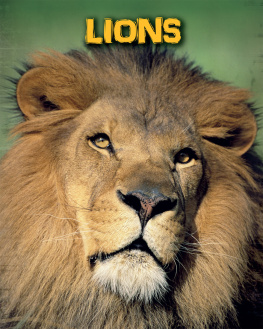

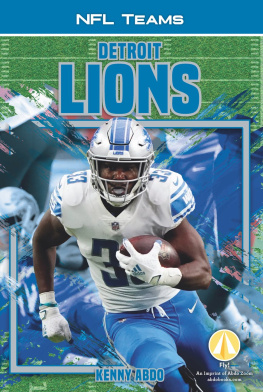
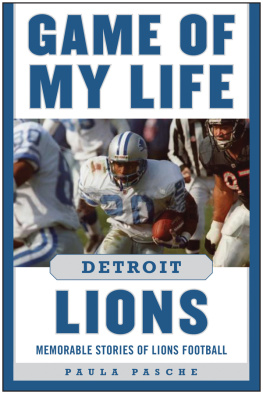


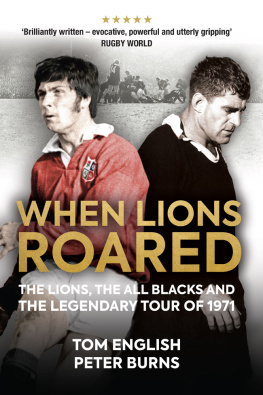


 The paper used in this publication meets the minimum requirements of American National Standard for Information SciencesPermanence of Paper for Printed Library Materials, ANSI/NISO Z39.48-1992.
The paper used in this publication meets the minimum requirements of American National Standard for Information SciencesPermanence of Paper for Printed Library Materials, ANSI/NISO Z39.48-1992.